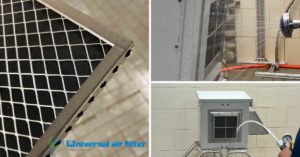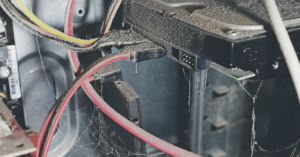
Introducing the latest innovation for Universal Air Filter customers – PentaVent™. Our thinnest outdoor framed filter, PentaVent leverages our proprietary Quadrafoam™ media in combination with hydrophobic mesh to keep dust, rain, snow, insects, and debris out of your electronics enclosures and outdoor cabinets. UAF’s PentaVent™ air filter features: Conforms to IP44 and NEMA 3R without […]
View More
Nothing is as constant in the networking infrastructure space as change. The current investment taking place is in moving data storage and connectivity equipment out of central offices and to the ‘edge’; as close to the point of need as possible. Successful edge networking involves hosting servers, storage, networking, routing, and data protection equipment in […]
View MoreThe cases of COVID-19 continue to escalate. Essential businesses are scrambling to find ways to help protect their workforce in order for them to maintain productive efficiencies and keep them safe from possibly contracting the deadly COVID-19 coronavirus. Right now, the #1 concern for workers is health safety in the workplace. What else can be […]
View MoreUniversal Air Filter (UAF), a Filtration Group company, today announced a price increase for customers in all of its segments. Pricing for most UAF products and programs will increase globally between 11 and 15 percent, varying by product specifications and complexity. This price increase will be effective April 1, 2020. This price adjustment is driven by […]
View MoreIndustrial air filters from Universal Air Filter® get tough when necessary. For indoor and outdoor applications requiring a more rugged design, the filters can be used in small or large applications calling for a wide array of media options for increased airflow and dust holding. “The industrial filters help customers who are looking for a […]
View More
The U.S. Patent and Trademark Office has issued the Certificate of Registration for Universal Air Filter®. As of June 24, 2008, Universal Air Filter® is a registered trademark. Headquartered in Sauget, Ill., Universal Air Filter® is a custom-designer and made-to-spec producer of NEBS certifiedair filters. In the fall of 2007, the company opened its China […]
View MoreWindowpane and Flex-Frame air filters added to online capabilities Universal Air Filter has added online 3D CAD capabilities for two of its most-popular frame models: the Windowpane and Flex-Frame air filters. Now, designers will be able to configure these filters and visualize them from all angles before downloading models into their final designs. “The success of our online 3D CAD modeling service […]
View MoreSept 10, 2013 — Universal Air Filter (UAF) partners with industry leaders like Cisco, Juniper, Oracle/Sun, IBM and HP to design air filter solutions and technologies for server, switching, routing and storage electronics. Google is the latest addition to UAF’s of data center equipment development customers.
View MoreUniversal Air Filter is launching a new, increased airflow media designed to meet the updated Telcordia NEBS GR-63-CORE, Issue 3 requirements forair filters. This new media is a disposable, less expensive alternative media with lower pressure drop and increased airflow, and is the only disposable NEBS certified media designed for 1U and 2U hightelecom and datacom […]
View More
High efficiency pleated media meets Indoor Air Quality MERV ratings AG Industries and Universal Air Filter (UAF) recently collaborated to develop a new product, the Caire O2 Sieve Bed Filter. When faced with a change to the European Restriction of Hazardous Substances (RoHS) regulation standards, AG Industries teamed up with Universal Air Filter to develop […]
View More